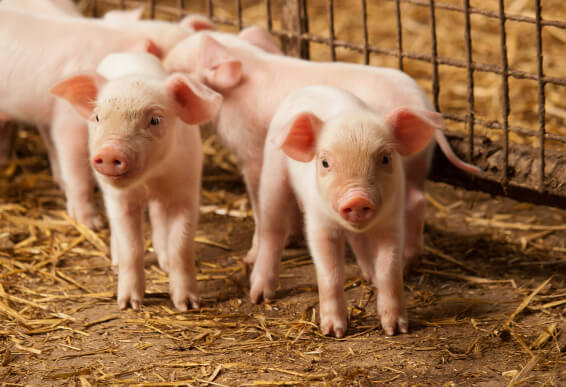
Diatomaceous earth is an excellent feed additive for your animals. Ranchers and pet owners alike have many stories of the benefits of adding diatomaceous earth to animal feed. Used as a feed additive, DE can promote intestinal and digestive health, healthier coats, and much more.
Follow our guide below to see how you can add DE to your hog or pig's diet.
You will need:
- Food Grade Diatomaceous Earth
- A Food Scale
- A Scoop
- Hog/Pig Feed or Substitute
Step 1:
As always, make sure that the DE you are using is food grade, non-food grade DE (i.e Pool Grade DE) is dangerous to you and your animal's health if not used for its intended purpose. If you have food grade DE, proceed to the next step. If you don't, you can purchase some here.
Step 2:
Before feeding your hogs or pigs make note of how much you will be feeding them. If you are going to give your animal 10 lbs or 20 lbs of feed it will affect the amount of DE you will be giving your animal.
The standard ratio for feeding animals DE is roughly 2% of the feed's weight. That means for 10 lbs of feed, you will need to add roughly 3 oz. of DE.
After taking note of the amount of feed you are going to give your animal, use the 2% rule to work out the weight of DE and measure it out on the scale.
An easier way is to be proactive and add DE to the bag or bushel of feed right after buying it. Simply add the DE to the container of animal feed at a rate of 2% that means you will need 2 lbs of DE for every 100 lbs of feed. Adding DE to your animal feed stores will help prevent any insect infestation.
If you are using food waste to feed your pigs you must follow the USDA guidelines for preparing swill (the swill must be boiled for at least 30 minutes and stirred). This is essential for preventing outbreaks of various diseases such as cholera, foot and mouth disease, and others. Add DE to the swill in measurements of fluid ounces (¾ Cup of DE for every 5 Gal of swill)
Step 3:
Then mix the DE thoroughly with the animal feed using your scoop and give it to your hog or pig.
Step 4:
Repeat as often as you feed your animal in place of regular foraging and grazing.


